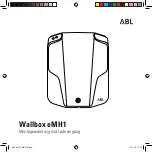
VIBRATION/PULSATION WHILE BRAKING - PROCEDURE CAT. P, NO. 001/95
Article Text
1983 Mazda RX7
For www.iluvmyrx7.com
Copyright © 1998 Mitchell Repair Information Company, LLC
Monday, September 03, 2001 03:36PM
ARTICLE BEGINNING
TECHNICAL SERVICE BULLETIN
BRAKE JUDDER REPAIR
Model(s): All Mazda Models Through 1995
Category: P
Bulletin No.: 001/95
Date: April, 27 1995
NOTE: This bulletin replaces Service Bulletin Cat. P, 006/94 dated
Sept. 1994.
DESCRIPTION
Customers who complain of vibration or pulsation in the steering
wheel, brake pedal, floor or seat while applying the brakes may be
experiencing symptoms of brake judder. Judder is caused by:
* Disk Thickness Variation (DTV)
* rotor run-out and/or
* rotor surface rust (which leads to DTV)
This bulletin describes the causes and corrections for each condition.
CAUSES OF JUDDER
1. Disc Thickness Variation (DTV) - DTV creates a vibration/pulsation
during application of the brakes. DTV will increase with mileage
accumulation if the run-out of the disc is excessive.
2. Disc Rotor Run-Out - Run-out, or rotor "wobble", leads to DTV. It
is corrected by precision machining to bring the run-out within
specification.
3. Rotor Surface Rust - Under certain conditions (storage or use in
extreme environments), the surface of the brake rotors may become
rusted in the pad non-contact area. If this I corrosion penetrates
the rotor surface deeply enough, it will not wear or rub off
during normal use. This will cause DTV.
CORRECTION
In order to effectively correct brake judder, rotor surfaces must be
precisely machined. Mazda has evaluated both on and off-car brake
lathes and has determined that on-car lathes are more precise and
greatly reduces comeback repairs.
The steps necessary for correction of brake judder are as follows:
















































